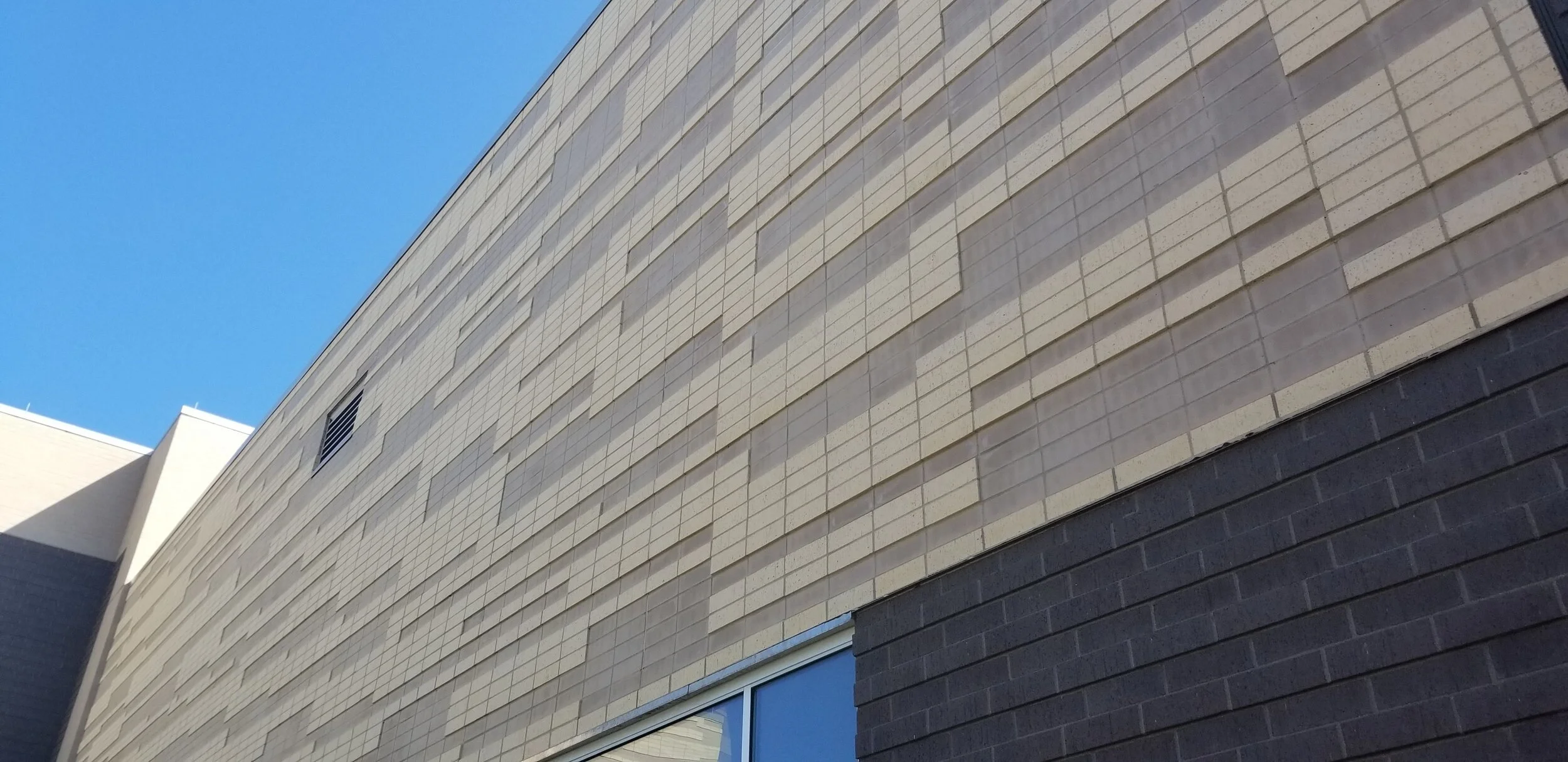Why non-modular brick?
/Modular brick, as noted in our last post, can mean two different things. “Modular” is the name given to a particular size of brick that is 2” wide by 4” long when incorporating the thickness of the eventual mortar joint in the wall. With a lowercase “m”, “modular” also describes any size brick that produces 4” modules (or multiples thereof) when installed. Modular masonry has many advantages, leading to the question, “Why is non-modular brick even a thing?”
Well, the truth is, any brick size can be modular in a roundabout way. Take any brick length and add the thickness of a mortar joint and you have a module, albeit not necessarily a 4” module. A structure can be designed around repetitions of this unique module. Moving beyond 4” modularity allows for unique visual looks and potential cost savings. Queen size (2 3/4” wide by 2 3/4” tall by 7 5/8” long) for example, produces a square foot of wall with only six brick compared to seven if Modular were used instead. Additionally, non-modular brick are more likely to be roughly three times as long as they are wide, making them ideal for a one-third running bond pattern.
Architects seeking cost savings for their clients should consider how their designs integrate with both material and labor efficiency. In the Queen size example above, material costs of both brick and mortar have the potential to be significantly reduced, but labor costs may actually go up depending on the design. Because of the reduced depth of Queen size brick, it does not automatically turn a corner on one-half bond, creating additional labor to physically cut some brick units. This may also affect the desired look. Specifying a one-third bond may eliminate the need for cutting.
With so many brick sizes, it’s hard to beat brick when it comes to flexibility for both design quality and cost management. But to maximize both, knowledgeable architects and designers are needed to orchestrate all the moving parts!













